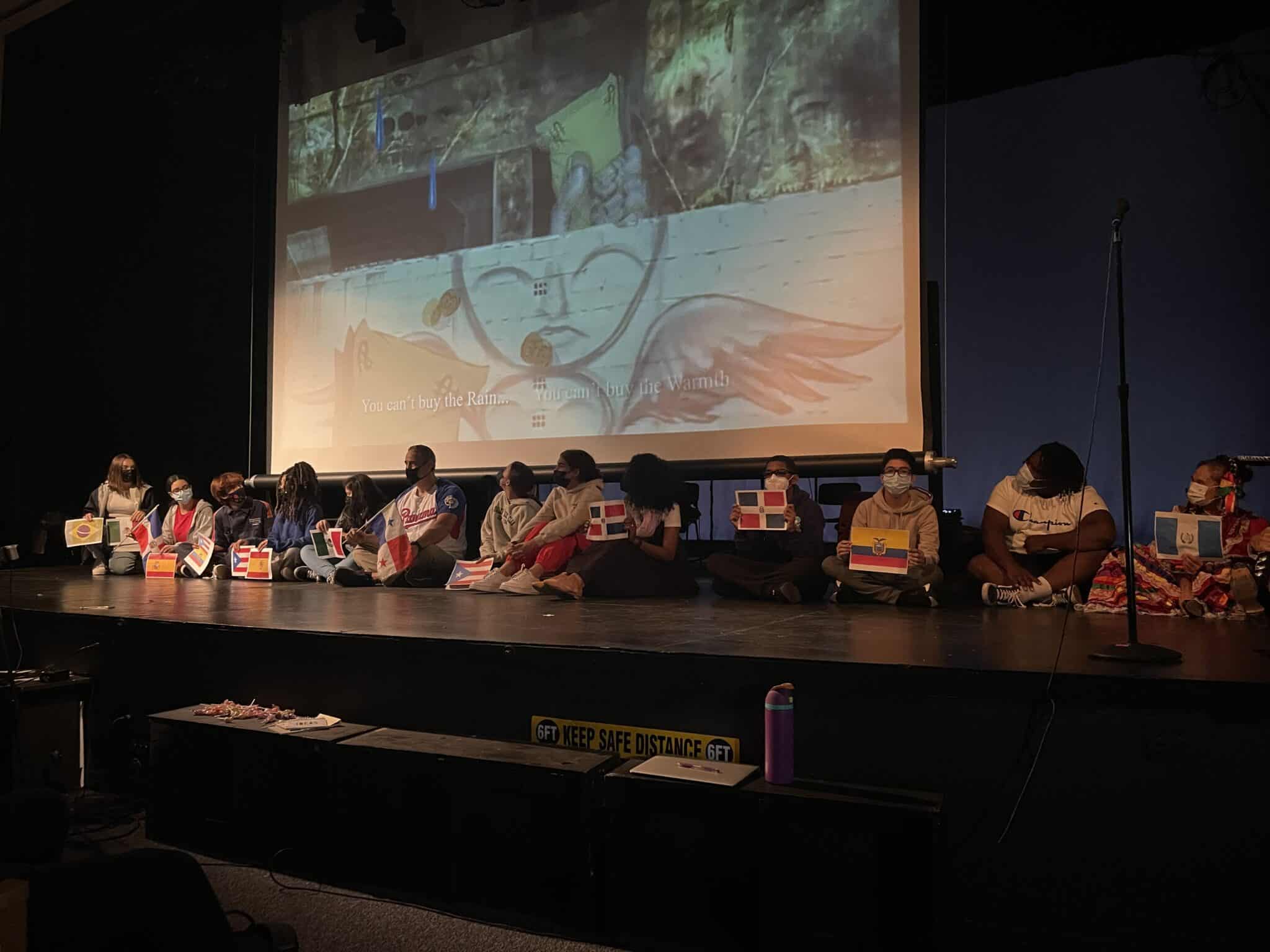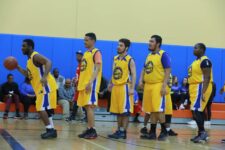On a Thursday morning in late September, Fieldston Upper students gathered in the auditorium for a very special assembly honoring Latinx Heritage Month. In-person assemblies came to halt in March 2020, and when the School returned to 100% in-person learning in the fall of 2021, students, faculty, and staff were eager and excited to gather once again. This year, to accommodate physical distancing, there are two separate assemblies for 9th and 10th Grades and 11th and 12th Grades.
Lorena Rodas-Ramírez, Fieldston Upper Language Teacher, worked with students and other faculty and staff to plan the assembly. Her goal was to honor the Latinx community at ECFS and beyond with a joyful, meaningful celebration. “These last 18 months have been extremely difficult and challenging for everyone, but particularly for our Latinx communities here in the US and abroad,” says Rodas-Ramírez. “Our Latinx people have been disproportionately hit by the pandemic since many are essential workers. Taking into account that our assembly was one of the very first ones, I was determined to start the year with a message of joy, hope, resilience, and the celebration of life, despite all the suffering and challenges around us.”

Honoring the many cultures and traditions within the Latinx community was also a priority. “We wanted to celebrate the cultural and racial diversity, richness, and beauty of our Latinx community at all levels since all these elements are generally erased when this country throws all of us together under one label as if we were a monolithic group,” explains Rodas-Ramírez.
The assembly began with a special video presentation. After that, Cuarteto Guataca, a local band, filled the auditorium with music. They performed “Plástico,” a song by Panamanian singer and composer Rubén Blades, and “Echate Pa’ Cá,” a song composed by Itai Kriss, one of the musicians from the band. After the musicians performed, Rodas-Ramírez and Juan Botella, Fieldston Upper Science Teacher, took to the stage and wowed the audience with El Jarabe Tapatío, a traditional Mexican dance from Guadalajara, México. At the end of the assembly, students, faculty, and staff who identify as Latinx or Hispanic sat on stage with flags representing their families’ country or countries of origin.

Rodas-Ramírez says her favorite memory from the assembly was her dance performance with Botella. “At the end of our first performance, many members of the audience gave us a standing and joyful ovation,” recalls Rodas-Ramírez. “I think that Juan and I were deeply touched by this gesture because we were not expecting it. It came as a complete surprise, a beautiful, spontaneous, and moving one. At that moment, I felt that we had been able to accomplish what we were hoping to do with this assembly.”



